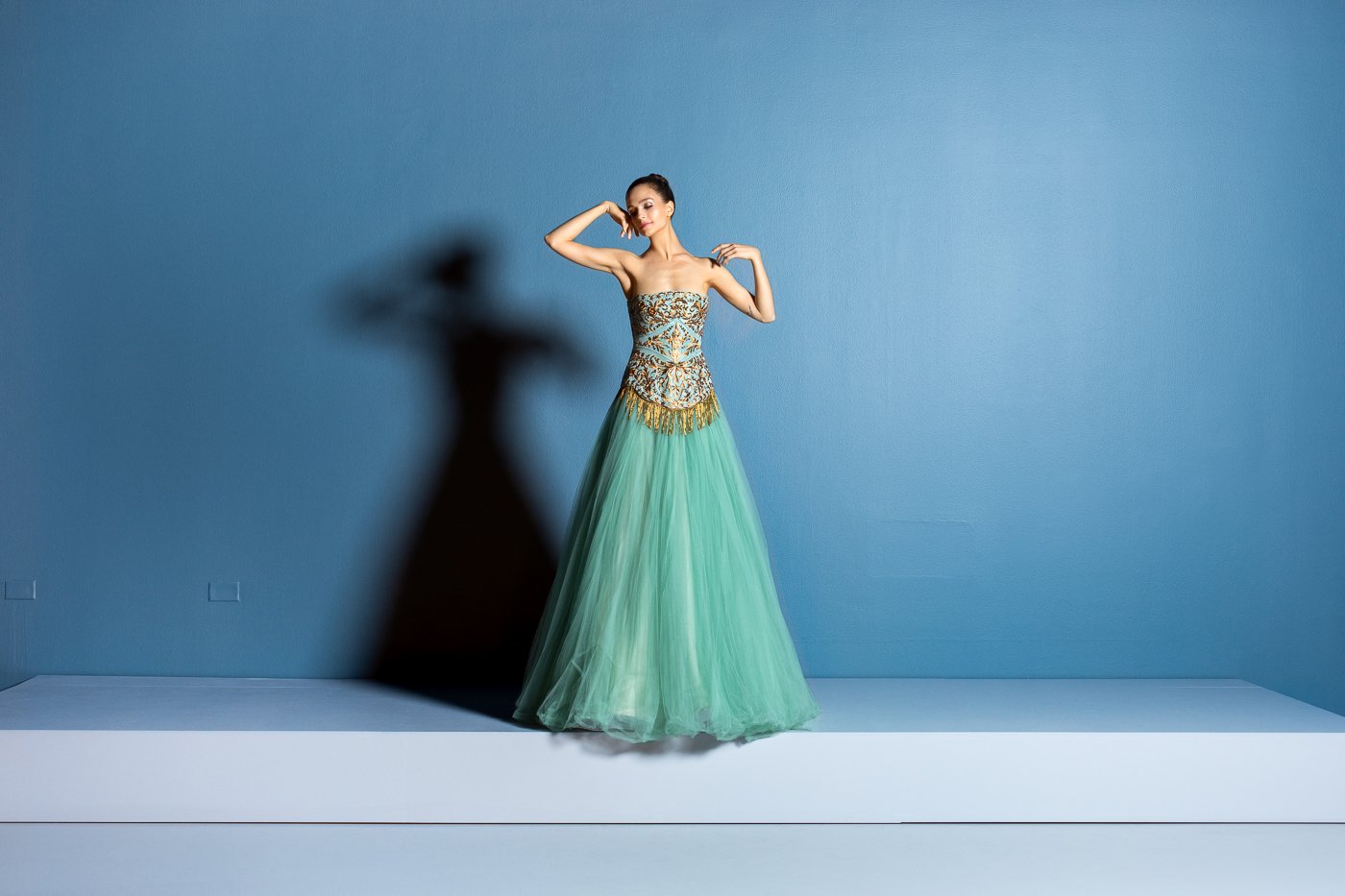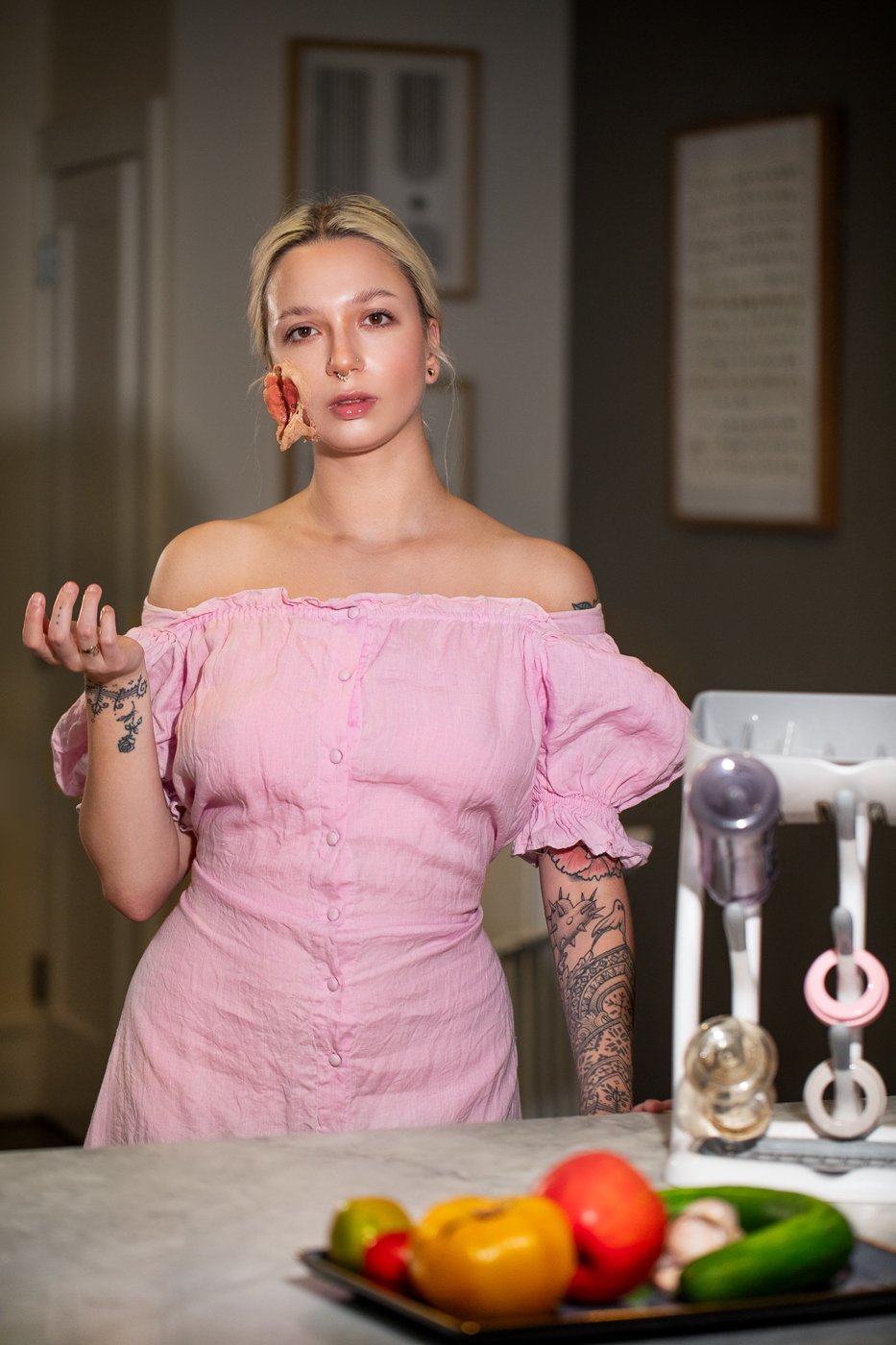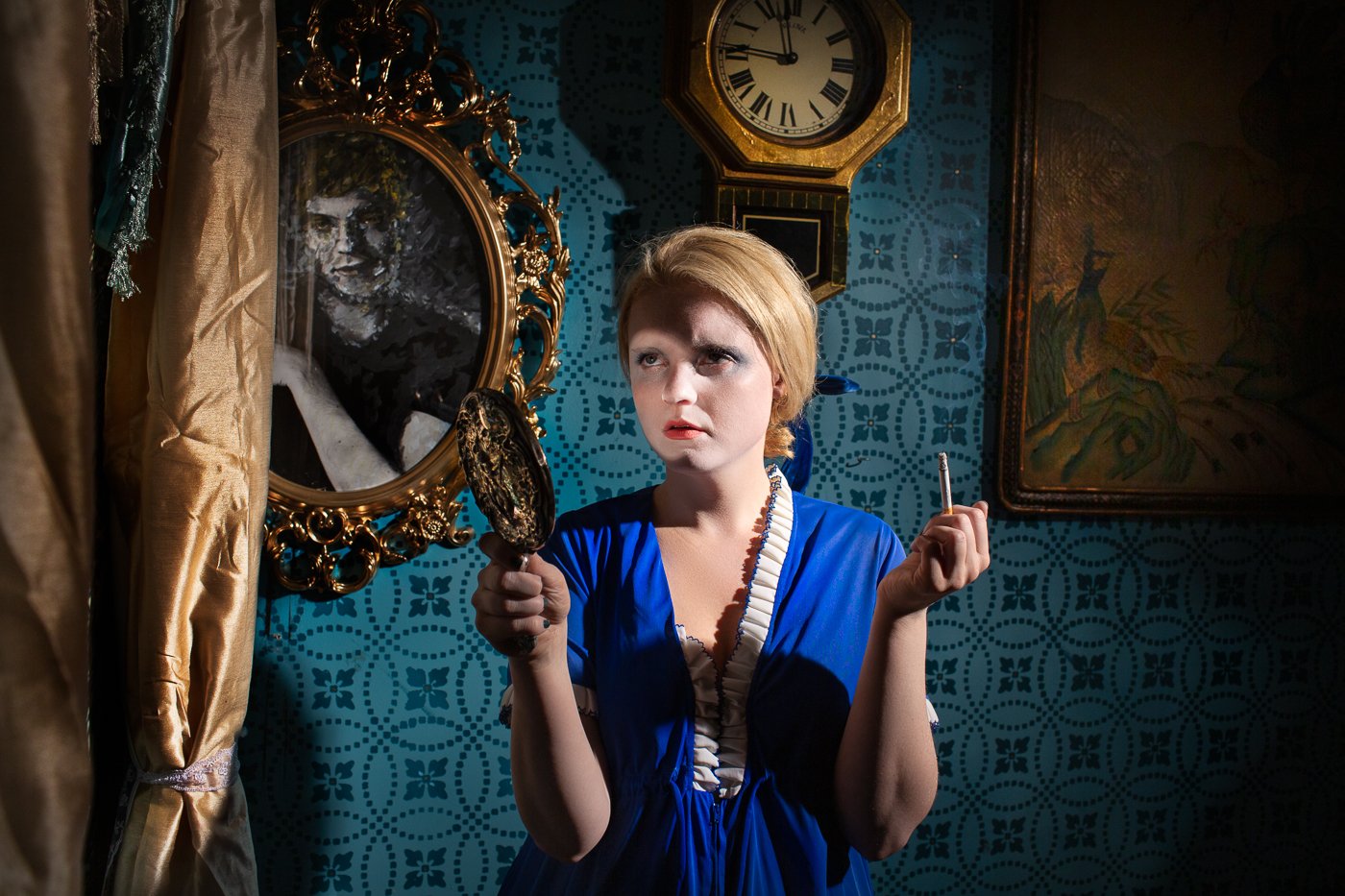




-
The Ventriloquist’s Daughter examines the burdensome and often contradictory ideals of beauty placed on the female body and the societal pressures to conform to a commercially idealized, heteronormative performance of femininity. American culture equates youth and beauty with power, often clashing with feminist ideals of self-empowerment. This work explores the tension between the desire to embody an idealized form of femininity and the awareness of its demands. Cognitive dissonance arises in questioning whether this pursuit is self-driven or shaped by economic, social, and cultural pressures with a legacy of sexism, where a woman’s worth is still too often tied to her physical appearance. The images grapple with the frustration of aspiring to this ideal while reinforcing traditional gendered representations rather than embracing new possibilities for female identity.
The photographs reflect my ambivalence over how to perform femininity and the restrictive messages I received about beauty, sexuality, and value while growing up on Manhattan’s Upper East Side. Whose version of femininity am I performing, and what does it mean to fall short of this privileged, white, thin, Anglo-Saxon standard of womanhood? My desire to be beautiful, even as I critique the manipulative influence of a capitalist market, reveals a common tension felt by many women. This cognitive dissonance around negotiating identity and sexuality is central to the work.
Blending artifice and observation, the series features handcrafted sets, spontaneous moments, recurring subjects, and self-portraits. The women in these images serve as proxies for desires and longings shaped by consumer culture, acknowledging that the female body holds inalienable power despite these influences. By exploring the interplay between longing and shame, The Ventriloquist’s Daughter inverts and distorts the enshrinement of youth, beauty, and sexuality as markers of status.
-
digital images.
